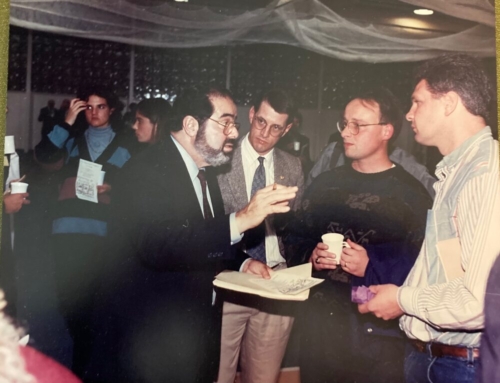Kris and I felt led to start our after-school program in the “Azalea Park” neighborhood in Lafayette.
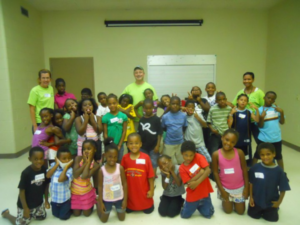 It is just barely “on the other side of the tracks.” Being adjacent to familiar suburbia was a definite plus for me. We thought that it would also be a plus for our volunteers. It was also near our local university, which was strategically important to us.
It is just barely “on the other side of the tracks.” Being adjacent to familiar suburbia was a definite plus for me. We thought that it would also be a plus for our volunteers. It was also near our local university, which was strategically important to us.
Other than its location, we knew next to nothing about the neighborhood. We did not know its history. We did not know any of the families who lived there. We knew they were poor, but that was it. We did not know their dreams or struggles. It had never occurred to me to be curious. There were River Babies to save. That is all we thought we needed to know.
Although we had identified our neighborhood, there was still one problem. I was chicken.
From the time I was laid off in July 2010 until April 2011, I had only been in the neighborhood once. That one time was to visit with a man that I had met at a Bible study. I offered to take him out for coffee to learn about the neighborhood. Although I drove through Azalea Park in broad daylight, I kept my car windows rolled up and my doors locked. I never even got out of my car. I called him when I arrived and told him I was waiting for him out front. I did not unlock the doors until he got to the car.
I was at a total loss for how to get started. One day, the thought popped into my head, “Go talk to Greg Gautreaux.” Greg was the number two guy at Lafayette’s Parks and Recreation Department. He was in charge of maintenance. I met Greg through our church’s annual community service day, which we called “Mission Possible.”
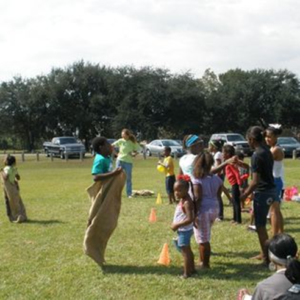
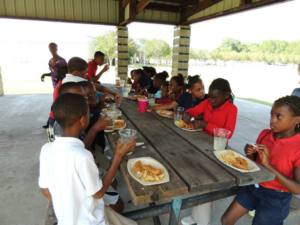 Those first weeks, we were shocked by what we saw. These children were not just a little bit behind in their schoolwork. The academic gaps we saw were staggering.
Those first weeks, we were shocked by what we saw. These children were not just a little bit behind in their schoolwork. The academic gaps we saw were staggering.
We had three fourth-grade boys who were learning long division. None of them could do simple addition. We had a second-grade boy who could not sound out three-letter words. He didn’t even know “dog” or “cat.” Our fourth-grade boys could not read much better.
For the younger students, Kris made some tracing sheets so children could practice writing the letters of their names. Tanner’s little hand trembled as he traced his letters. His name looked like it had been written by someone who suffered from palsy. He had no fine motor skills.
We didn’t know it at the time, but children growing up in poverty do not have crayons, markers, or coloring books. Things we take for granted; they have never seen. His first day in kindergarten was the first day he had ever held a pencil. The developmental deficits were mind-blowing. Kris and I had never seen anything like this before. Unfortunately, we have seen it too many times since.
On average, our students were two to three years below grade level.
By the end of the first month of tutoring, we realized we were in deep weeds. I began to research poverty’s effect on children. I came across the book “Teaching with Poverty in Mind,” by Eric Jensen. Here, I discovered that what we were seeing was not an anomaly. These gaps were commonplace knowledge in academic circles. That in itself blew my mind. How is it that I had never heard about this before?
Studies have shown that by age two, children growing up in poverty are six months behind in language skills. By age four, they are 18 months behind developmentally. By fourth grade, they are over two years behind their middle-class academic peers. These academic performance gaps between poor and middle-class children are known as the “income achievement gap.” Later, I would discover that the racial achievement gap was even larger. (The Educational Achievement Project by Stanford University).
By the end of chapter two, I threw the book against the wall. As Mr. Jensen outlined the savage inequalities of children growing up in poverty, I felt hopeless. For me, this wasn’t some abstract sociology report. These were not abstract statistics; they were our kids. As I read each page, I reflected on their names. I saw their faces. Now I knew where they lived. It would be a while before I could pick up the book again.
I began speaking with education and sociology professors at the University of Louisiana at Lafayette. I began asking them about the correlation between poverty and educational attainment. Professor Daspit invited me to come with him to a lecture that would be given by LSU educational researcher; Noel Hammit.
There, for the first time, I heard someone say that there was no single factor more closely correlated to academic success than the Social Economic Status (SES) of a child’s parents.
Before we started the summer program, I began to do a little research on the neighborhood. I discovered that two neighborhood matriarchs had been instrumental in establishing the J. Carlton James Activity Center: Miss Eva Breaux and Miss Ruby Wiltz.
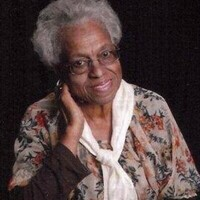 Miss Eva had operated a preschool in the neighborhood for many years. Miss Wiltz had been running an after-school tutoring program in the nearby Truman neighborhood. They both advocated for the city council to provide a place for the children to learn and play in their neighborhood. Although it took several years, eventually, the city fathers relented and built the J. Carlton James Activity Center. Immediately after the building was dedicated, Miss Ruby brought her after-school program to the J. Carlton James building.
Miss Eva had operated a preschool in the neighborhood for many years. Miss Wiltz had been running an after-school tutoring program in the nearby Truman neighborhood. They both advocated for the city council to provide a place for the children to learn and play in their neighborhood. Although it took several years, eventually, the city fathers relented and built the J. Carlton James Activity Center. Immediately after the building was dedicated, Miss Ruby brought her after-school program to the J. Carlton James building.
We thought we were starting something new when we began new Hope. We fancied ourselves to be urban pioneers. Our thoughts belied our ignorance of the neighborhood’s rich history.
All of us stand on the shoulders of those who have gone before. New Hope stands on the shoulders of Miss Ruby and Miss Eva. Their work, foresight, and determination gave New Hope a place to meet. We were not pioneers; we were explorers searching for the path God had already laid out.
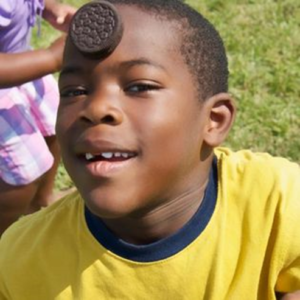 I made an appointment for Kris and me to visit with Miss Eva. She told us about her preschool. Many of her relationships with those families continued after she retired. Older neighborhood children still visited her on their way home from school. Then she told us her story about the J. Carlton James Activity Center.
I made an appointment for Kris and me to visit with Miss Eva. She told us about her preschool. Many of her relationships with those families continued after she retired. Older neighborhood children still visited her on their way home from school. Then she told us her story about the J. Carlton James Activity Center.
Then she asked us about our work. I told Miss Eva about the kids in our summer program. I didn’t get too far into our story before she interrupted me. “John, there are no bad children. There are only children who feel loved and children who don’t.” I am still unpacking that statement to this day.
Shortly after we visited with Miss Eva, we started our after-school program with Miss Eva’s words steeping in our minds. The first week, we began with six children. By the end of the second week, we had twelve children, which was all we could handle. One adult for every four children wasn’t working. We were going to need more volunteers.
In Louisiana, it did not matter whether children went to private schools or public schools. Both middle-class students and under-resourced children received similar scores on standardized tests to their respective peer groups regardless of the school they attended. Their school made very little difference. On the other hand, parental SES made all the difference.
It turns out that the U.S. doesn’t have a public-school problem; we have a child poverty problem. With 15% of our children growing up in poverty, the United States has the highest child poverty rate in the industrialized world. A Stanford University Study found that middle-class students are on par or even slightly ahead of most of their international peers. When comparing similar SES demographics, the U.S. was among the top 4 countries for reading and top 10 in math (the Program for International Student Assessment 2000 – 2009). The study also found that the U.S. does better than nearly every other industrialized nation in educating children living in poverty. Since children living in poverty score much lower than middle-class children on standardized tests, and since the U.S. has a much greater percentage of children living in poverty, our large number of low SES students brought our national average test scores down in reading and math.
Since child poverty is the problem, “school choice” is not the solution. School choice provides the means for middle-class students to get away from schools with under-resourced children. This not only does not solve the achievement gap problem; it makes them worse.
For a host of reasons, school choice is not a real choice for the poor: they lack transportation, they can’t afford school uniforms, they can’t afford the cost of onsite after-school care, or they are intentionally screened out by academic testing. But even when the choice is offered to them, it often doesn’t work.
Between 2012 and 2014, Louisiana expanded school choice by expanding the state’s voucher program. It didn’t work. Vouchers were given to 6,000 more children who attended 126 private schools. According to a study conducted by the National Bureau of Economic Research, the voucher students’ test scores fell by an average of .4 standard deviations in math and .25 standard deviations in English. Economically challenged students did better in public school.
That is because most private schools are not equipped to help children living in poverty. Children living in poverty require additional resources. Being two years below grade level, they need academic mediation. Private schools don’t provide that. Poor children are more likely to have learning disabilities and behavioral problems. Private schools don’t have special education teachers or counselors who are equipped to handle special-needs children. Although school choice is presented as the magic elixir for the under-resourced, “school choice” schools are seldom designed with poor families in mind.
Neither are charter schools the magic elixir. Turns out that charter schools are a mixed bag. Some charter schools outperform public schools; some don’t. About half of charter schools have identical outcomes as public schools. According to a Stanford Study (CREDO: As a Matter of Fact: The National Charter School Study III, June 9, 2023) 37% of all charter schools slightly outperformed the public schools in reading. On the other hand, 17% of all charter schools underperformed public schools, while 47% had the same scores in reading as the public schools.
While the gains cited in the report are statistically significant, the actual reading gains are marginal at best. On average, student reading gains in charter schools equaled 16 “days of learning.” That is a growth of .02 standard deviations. For context, it takes .01 standard deviations for an item to be statistically significant. Since these reading gains barely register as being statistically significant, they are hardly a reason for celebration. Student integration, on the other hand, has shown much greater academic gains.
Admittedly, charter schools have proven to do better in educating minorities. For those of us concerned about economic and racial equity, that certainly is a plus. They certainly may provide part of the solution. Yet, there is reason to suspect that some of these statistical gains reflect schools’ demographics, more than their intrinsic superiority to public schools.
What do we know about the families that send their children to charter schools? Charter school parents tend to be more proactive and engaged regarding their child’s education. Unfortunately, for most families living in poverty, this is not the case. According to the same CREDO study, charter schools tend to be “abysmal” in educating students with disabilities. The inability to educate students with disabilities combined with attracting the best public students assures that charter schools have a stronger student population than public schools. The existence of charter schools causes public schools to have higher concentrations of high-needs students.
Studies have also shown that communities with charter schools are significantly more segregated by race and income. It appears that the charter school solution contributes to the fundamental problem of student segregation.
Charter schools may have a role to play in specific situations. The Promise Academy in Harlem is an example of a charter school done properly. The Promise Academy is part of the Harlem Children’s Zone comprehensive plan of improving Harlem block by block. (For more information on the Promise Academy, read “Whatever it Takes” by Paul Tough.)
So, what’s the answer? One answer supported by research is mentoring. We will discuss that solution in more detail next time. One solution that has proven to work is student integration.
There is only one time in our country’s history when the income and racial achievement gap narrowed: during forced busing between 1971 and 1980. There has never been a time before or since that has seen such a narrowing of the racial and income achievement gap.
I am not advocating forced busing. I am aware that during forced busing, many injustices occurred. Black teachers were summarily fired and replaced by white teachers. In the 1970s, white teachers were about as happy about teaching black students as black teachers were about being fired. As a result, many black students experienced racial prejudice in the classroom. Race riots popped up on school campuses across the country. This unsettling time expedited white flight. That makes it all the more remarkable that despite all this, the achievement gap narrowed more during this time than it had any time in our nation’s history.
The efficacy of integration has been confirmed by meta-studies done by the New Century Foundation. They have found that when poor black children are integrated into majority white schools, their educational attainment improves by two grade levels over their peers who attend high-poverty schools. Their studies have also shown that school integration helps under-resourced children without harming the academic performance of middle-class white students.
Stanford University researchers have come to a similar conclusion. In analyzing standardized test data from every school district in the country between 2009 and 2018, they found that the most segregated schools were performing the poorest. They also observed that as school districts became more segregated, their racial and income achievement gaps grew. Conversely, they found that school districts that integrated saw, the achievement gap decline.
These results reflect the second biggest factor correlated to academic success: the SES of a child’s academic peers. This makes sense when we realize that under-resourced children are much more likely to develop resourced relational mentoring networks in an integrated setting rather than in a high-poverty neighborhood school. This is especially true for poor black children. While 45% of all poor black children live in high-poverty neighborhoods, only 12% of poor white children live in similar neighborhoods. Altogether, only 3% of white children live in high-poverty neighborhoods, while nearly 20% of all black children live in high-poverty neighborhoods. Unfortunately, race plays are tremendous role in the likelihood of a child growing up in concentrated poverty.
Additionally, an integrated school is a much better learning environment.
Ponder, for a moment, the classroom of the typical high-poverty school. There are twenty-four third-graders in the classroom. Fifteen students in the classroom is the class size that is recommended by the School Superintendent Association. (This recommendation especially holds for high-poverty schools, which adversely affects black children much more frequently than white children.)
Most students in high-poverty schools are two years below grade level. More than a quarter of these students will have some type of undiagnosed learning disability. About a quarter of the class will have significant behavioral problems. Students who arrive at school late will miss school breakfast and will start the day hungry. If they find the school lunch unpalatable, they will finish the day “hangry.” That is a difficult teaching environment for the most skilled teacher. More often than not, these classrooms are being filled with teachers with very little experience. Not exactly a recipe for success.
It is not just child poverty; it is concentrated child poverty.
No, public schools are not the problem: concentrated child poverty is. Public schools merely reflect our society’s profound division and segregation. Societal healing can only begin with integration.
When I speak of integration, I am not speaking of a one-time event. I am speaking of a process. A process envisioned by Martin Luther King. Although almost entirely forgotten today, integration was the keystone of Martin Luther King’s Civil Rights efforts. He argued that there could be no Civil Rights victory without integration. He saw Civil Rights violations as the symptom. The problem was that we didn’t love our neighbors.
For him, integration led to “Beloved Community.” Diverse people together and we are all better for it. We all become friends. We become concerned about each other’s welfare. When we remove the physical barriers of segregation, we provide the opportunity for Beloved Community to form.
Beloved Community can only begin when we learn to change our pronouns. We can no longer talk about “those people,” “those kids,” and “those parents.” The “us” and “them” rhetoric keeps us apart, reinforcing our innate tribalism. It implicitly states that the “others” are inferior to “us.” This type of talk is at the very root of our societal problems. Dr. King knew this. When these words are uttered from our lips, they provide a window to our souls. If we listen closely to what we have said, we can see that we don’t love our neighbors.
Ultimately learning to love our neighbors on the “other side of the tracks” is the solution. When we do this, we all benefit from Beloved Community. When we desire Beloved Community, we will want what’s best for everyone’s children. In Beloved Community, we begin to talk about “our kids,” our community,” and “our future.” When we see a change in pronouns, we will know we are on the road to healing.




